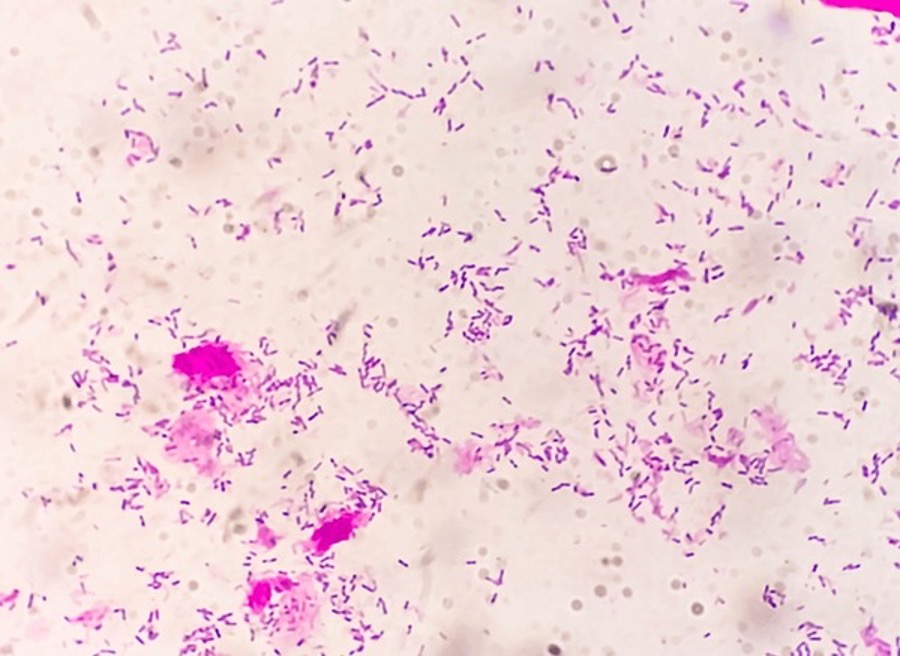Admitted to the hospital
Ray was admitted to the hospital two days ago. (need to say what’s going on with him, is he breathing better, was antibiotic given? Briefly, what’s been going on for the past two days? A sentence or two.) The first sputum result returns, and you are called by the ID consultant to look at sputum slides.
- Results
- Additional information
Moderate afb.
- NAAT positive for M. tb complex.
- GenExpert negative for rifampin resistance.
- Subsequent smears are same results,
- All should be sent for culture.
Your differential
With TB on your differential, you reviewed DOH’s Notifiable Conditions that require communication within 24 hours. You notify the Yakima Health Department TB nurse.
She thanks you for contacting her, and tells you she will review the hospitalization notes. Unfortunately, her local health officer does not treat tuberculosis. She will need you, in consultation with the ID doctors, to treat Ray when he is discharged.
Think about this
Discuss in the Slack channel:
Based on your understanding of tuberculosis, and given Ray’s history (see Background), who would you consider for this contact tracing? Why?
Over the past week
-
Temperature
Ray has occasional fevers (high 102.1°F) but gradual improvement is noted.
-
Lungs
Ray has had less work of breathing after drainage of the empyema.
-
X-ray
CXRs are performed daily, but no significant changes are noted.
-
Chest tube
The chest tube is removed on Day 5 of hospitalization.
-
Discharge
- Ray is discharged on Day 7. Although the guidelines for isolation have changed, given his housing status, there is concern about returning him to the bunkhouse where he’s been living.
- Local public health recommends continued isolation for a total of 28 days after initiation of treatment and finding alternative housing with an abundance of caution. Given the concerns of pulmonary TB and his housing status, (although M. bovis cannot be ruled out until culture results return, as well as clinic visits that preceded his admission), the health department TB nurse will be performing TB contact identification.
- You offer to see Ray in your continuity of care clinic because the local health officer does not treat tuberculosis. Per the Washington state statutes, regulations, and reporting, you will need to be made aware of his treatment.
After being discharged

Ray follows up with you and your preceptor, Dr. Williams, at the YVFWC three weeks after his hospital discharge. He tells you (through the interpreter) he is feeling much better—cough is less, and he is less tired. Your evaluation finds he has gained 4 pounds since his discharge. The chest tube scar looks well-healed, but your examination worries you because there are no significant changes in what you hear when you listen to his lungs.
Dr. Williams reassures you that this is not unusual, especially given the severity of his disease. In your review of labs, his diagnosis of M. Tb has been confirmed with culture results that came back positive a few days ago. Drug susceptibility testing determines his TB is sensitive to all medications.
Question 1
What additional questions do you want to ask? (symptoms, to include side effects of medications)
Question 2
What studies are indicated today?
AST/ALT during hospitalization were normal and if side effect of med questions asked, he has no symptoms to suggest hepatotoxicity; refer to IDSA guidelines 2016 Figure 2 for reference.
Question 3
How would you explain the course of treatment to Ray?
Question 4
What other considerations should you discuss with him? (e.g., return to work status, on-going contact tracing, importance of adherence with medications through the health department, report of any symptoms, other.)
Health department TB nurse
You explain to Ray the health department TB nurse will be providing his treatment, and as you are on a 4- week rotation, he will be seen in the FQHC clinic by Dr. Williams and other medical students on their rotation. You thank him for the opportunity of caring for him, both in the hospital and in the clinic, and reassure him TB can be treated with medications, and he will be able to continue to work in the orchards.
Clinical correlation
You explain to Ray the health department TB nurse will be providing his treatment, and as you are on a four-week rotation, he will be seen in the FQHC clinic by Dr. Williams and other medical students on their rotation. You thank him for the opportunity of caring for him, both in the hospital and in the clinic, and reassure him TB can be treated with medications. Ray will be able to continue to work in the orchards.
Public Health correlation
Access to care and healthcare utilization
- What barriers to accessing timely, continuous, and appropriate healthcare did Ray face?
Economic instability and health
- What are the trade-offs Ray faced between earning income and seeking healthcare?
- How does income insecurity affect treatment adherence and follow-up?
- What public health or social safety net programs could help mitigate these conflicts?
Resource: TB101 for Health Care Workers. CDC.
Image credits
Unless otherwise noted, images are from Adobe Stock.



